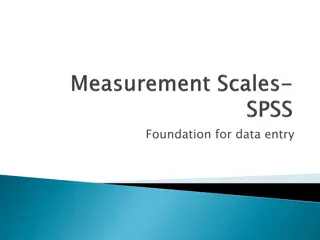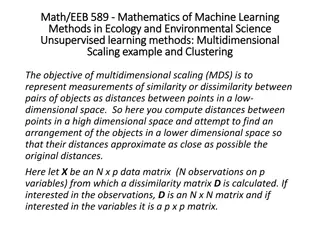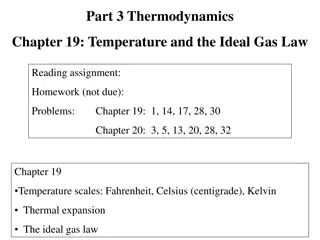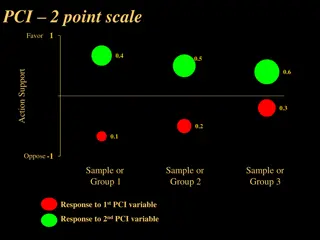Understanding Measurement Scales and Scaling Techniques
Measurement scales play a crucial role in marketing research, with techniques like scaling helping to categorize data. The content discusses four types of measurement scales: nominal, ordinal, interval, and ratio, outlining their characteristics and differences. Scaling techniques involve placing respondents in a gradual sequence based on predefined features of an object. Check out this informative guide to enhance your understanding of measurement scales and scaling techniques.
Download Presentation

Please find below an Image/Link to download the presentation.
The content on the website is provided AS IS for your information and personal use only. It may not be sold, licensed, or shared on other websites without obtaining consent from the author. Download presentation by click this link. If you encounter any issues during the download, it is possible that the publisher has removed the file from their server.
E N D
Presentation Transcript
SCALING Scaling technique is a method of placing respondents in continuation of gradual change in the pre-assigned values, symbols or numbers based on the features of a particular object as per the defined rules. All the scaling techniques are based on four pillars, i.e., order, description, distance and origin. The marketing research is highly dependable upon the scaling techniques, without which no market analysis can be performed.
CLASSIFICATION OF MEASUREMENT SCALES Nominal Scale Ordinal Scale Interval Scale Ratio Scale
NOMINAL SCALE A nominal scale is the 1st level of measurement scale in which the numbers serve as "tags" or "labels" to classify or identify the objects. A nominal scale usually deals with the non-numeric variables or the numbers that do not have any value. Characteristics of Nominal Scale: A nominal scale variable is classified into two or more categories.In this measurement mechanism, the answer should fall into either of the classes. It is qualitative . The numbers are used here to identify the objects. The numbers don't define the object characteristics . The only permissible aspect of numbers in the nominal scale is "counting."
ORDINAL SCALE The ordinal scale is the 2nd level of measurement that reports the ordering and ranking of data without establishing the degree of variation between them. Ordinal represents the "order." Ordinal data is known as qualitative data or categorical data. It can be grouped, named and also ranked. Characteristics of the Ordinal Scale: The ordinal scale shows the relative ranking of the variable. It identifies and describes the magnitude of a variable.
INTERVAL SCALE The interval scale is the 3rd level of measurement scale. It is defined as a quantitative measurement scale in which the difference between the two variables is meaningful. In other words, the variables are measured in an exact manner, not as in a relative way in which the presence of zero is arbitrary . Characteristics of Interval Scale: The interval scale is quantitative as it can quantify the difference between the values. It allows calculating the mean and median of the variables. To understand the difference between the variables, you can subtract the values between the variables.
RATIO SCALE The ratio scale is the 4th level of measurement scale, which is quantitative. It is a type of variable measurement scale. It allows researchers to compare the differences or intervals. The ratio scale has a unique feature. It possesses the character of the origin or zero points. Characteristics of Ratio Scale: Ratio scale has a feature of absolute zero. It doesn't have negative numbers, because of its zero-point feature























